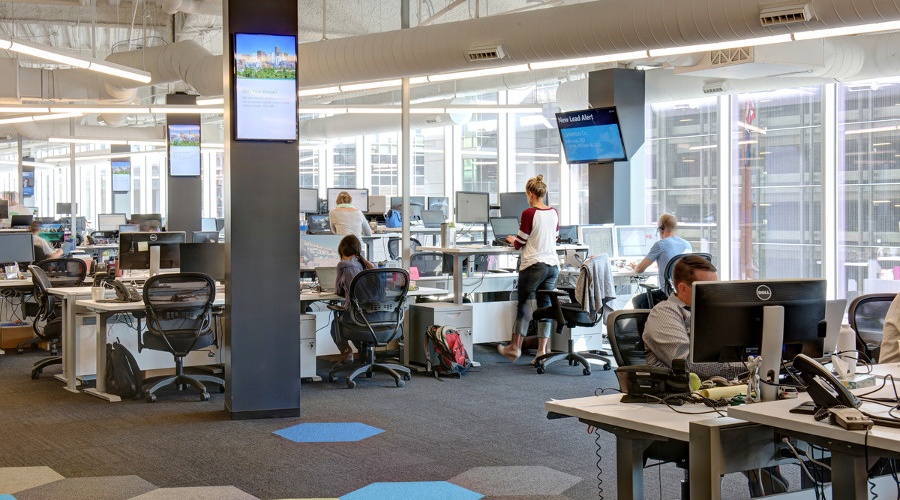To Sit or Stand? The Argument for Standing in the Workplace

Raise your hand if you’re one of the many hunched over your keyboard at a desk in a not-so-comfortable office chair. Unfortunately this is the norm for the majority of the U.S. workforce. The Bureau of Labor statistics reports that we spend between 8 and 9 hours each day seated, in sedentary positions.
What does this mean for the average U.S. adult? Not only does sitting for prolonged periods of time contribute to disease but it also leads to unproductive, unhappy workers, something which is bad for any organizations bottom line. With our ongoing and increasing dependence on computer technology you might ask how it’s possible to combat sedentary behavior? The answer may be as simple as alternating between sitting and standing throughout the workday.
The Sit-Stand Solution
Research has identified a multitude of health benefits associated with standing work, including increased circulation, improved mental clarity and the burning of more calories. It’s now up to organizations to provide flexible office solutions that allow employees to sit AND stand. This is what we at KI refer to as the sit-stand paradigm - developing a healthy, balanced approach of combining periods of seated work with periods of standing work through the use of dynamic sit-stand workstations.
We understand that every organization is different so a one-size-fits-all approach is not recommended. Below are several ideas for strategizing and implementing stand up workstations or sit-stand solutions into your workplace based on your employee’s unique needs.
- Assess employee needs. First, determine which employees would benefit most from sit-stand workstations. Some employees may not have a position conducive to standing; it’s important to identify those who will have the most success with this solution.
- Be flexible. Recognize opportunities to decrease cost by deploying shared sit-stand workstations for employees who may have alternate shifts, work part-time or work from home.
- Provide alternative opportunities to stand. If sit-stand workstations aren’t an option for your organization, consider opportunities to encourage more standing throughout the work environment. This could include centrally locating printers, trash, bathrooms etc. Central locations for these items encourage employees to get up and move.
- Be selective. If the previous options don’t fit your budget or work demands, then deploy sit-to-stand for those with a qualifying medical need.
For more information on the benefits of standing, download KI’s white paper, “The Sit-Stand Paradigm: Increasing Workplace Health & Productivity”.
Subscribe
Stay up to date with the latest trends and more.


